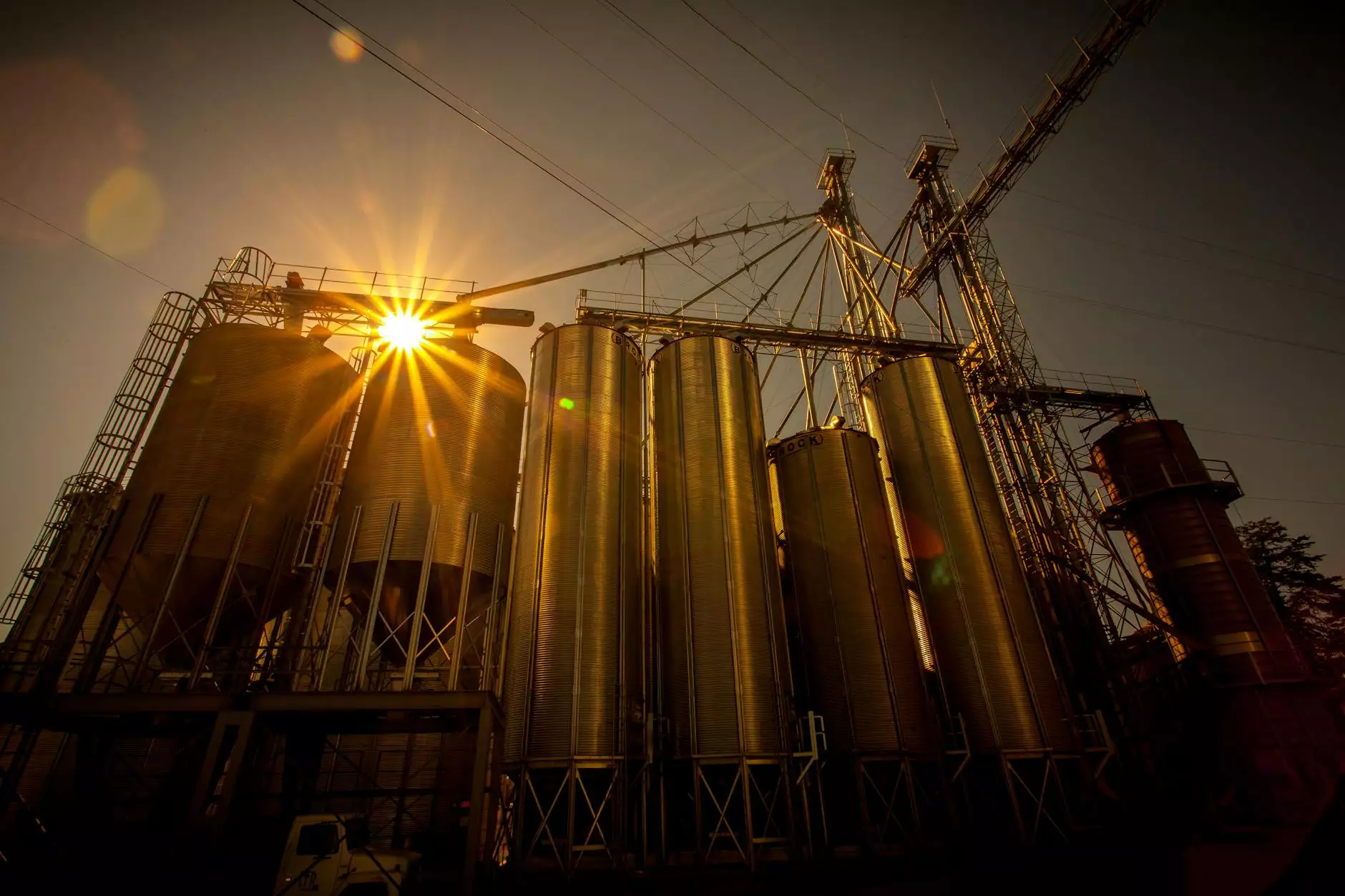Understanding the Industrial Location Model: A Comprehensive Guide for Architects

The industrial location model is a crucial concept for architects and urban planners. It serves as a framework for understanding how industries choose their locations, which ultimately impacts urban design, zoning, and infrastructure development. This article delves deep into the nuances of the industrial location model, offering architects valuable insights that can enhance project success and sustainability.
What is the Industrial Location Model?
The industrial location model is a theoretical framework that outlines the factors influencing the location of manufacturing and industrial activities. This model helps in understanding the decision-making processes of businesses when establishing operational facilities. Various factors play a critical role, including:
- Proximity to Raw Materials: The availability of essential materials nearby can significantly reduce transportation costs and lead times.
- Access to Markets: Being close to consumers helps in reducing shipping distances and improving customer satisfaction.
- Labor Availability: A skilled and available workforce is crucial for operational efficiency.
- Transportation Infrastructure: Well-developed roads, railways, and ports facilitate the movement of goods and are essential for industrial success.
- Regulatory Environment: Local laws, zoning regulations, and incentives can greatly influence location decisions.
Key Models in Industrial Location Theory
There are several key models and theories that further elaborate on the industrial location model:
1. Weber's Model of Industrial Location
Developed by Alfred Weber in the early 20th century, Weber's model emphasizes minimizing transport costs as the primary factor in industrial location. According to this model, businesses strategically locate their operations to reduce transportation costs, balancing the location of raw materials and markets.
2. Losch's Model of Spatial Organization
August Losch expanded upon Weber's ideas, introducing the notion that industries will locate in areas where they can maximize their profits by considering demand factors, market size, and consumer behavior. His model introduces the concept of profit maximization in choosing locations.
3. Christaller's Central Place Theory
Walter Christaller presented a different perspective with his central place theory, focusing on how central places (towns and cities) serve as markets for surrounding areas. This model highlights the importance of market size and distribution when considering industrial placements.
Importance of the Industrial Location Model for Architects
For architects, understanding the industrial location model is crucial when designing facilities that meet the needs of industries. Here are several reasons why:
1. Enhancing Designs Based on Spatial Needs
By recognizing industry-specific needs and spatial requirements, architects can create more functional and efficient designs. For example, a facility designed for manufacturing may require large open spaces, high ceilings, and specific tooling setups that align with the operational front of the industry it serves.
2. Incorporating Sustainability
Architects can leverage insights from the industrial location model to design sustainable facilities that prioritize renewable resources, reduce waste, and lower carbon footprints. For instance, understanding the transport routes can help in positioning facilities to minimize energy consumption and emissions.
3. Meeting Compliance and Regulatory Standards
The industrial location model also helps architects navigate local zoning laws and regulations, ensuring that facility designs comply with safety, environmental, and operational standards. This understanding can prevent costly redesigns and facilitate smoother project approvals.
Challenges in Implementing the Industrial Location Model
Despite its advantages, implementing the industrial location model presents several challenges:
1. Evolving Market Dynamics
The industrial landscape is continuously changing due to globalization, technological advancements, and changing consumer preferences. Architects must remain agile, adapting their designs to align with these shifts.
2. Environmental Considerations
With increasing emphasis on sustainability, architects and planners face pressure to consider environmental impacts more keenly when designing industrial spaces. Compliance with environmental regulations may limit location options and impact design strategies.
3. Balancing Cost and Functionality
Architects must balance the cost of development and operational functionality in the context of the industrial location model. This often involves making tough choices about material selection, layout, and equipment design to ensure the project remains within budget while still meeting operational needs.
Strategies for Effective Implementation of the Industrial Location Model
To maximize success when applying the industrial location model, architects should consider the following strategies:
1. Conduct Comprehensive Site Analysis
A thorough analysis of potential sites, considering environmental factors, transportation access, and proximity to resources, is essential. Tools like GIS mapping can help visualize and assess site potentials.
2. Engage Stakeholders Early
Involving stakeholders—including industry representatives, local governments, and community members—early in the design process can help identify needs and expectations, stabilizing the project's direction and ensuring that it serves the community's best interests.
3. Utilize Advanced Technology
Embracing technologies such as Building Information Modeling (BIM) can enhance the design process by allowing architects to visualize spaces in a digital format, analyze efficiencies, and identify potential issues before construction begins.
Case Studies: Successful Implementations of the Industrial Location Model
Understanding real-world applications can provide invaluable insights. Here are a few case studies that illustrate the successful implementation of the industrial location model in architectural practices.
Case Study 1: Tesla Gigafactory
Tesla's Gigafactory in Nevada is an exemplary case of applying the industrial location model principles. The factory’s location was chosen due to its proximity to raw materials needed for battery production, available workforce, and access to transportation routes. This strategic positioning has enabled Tesla to streamline its supply chain significantly and reduce costs.
Case Study 2: Amazon Fulfillment Centers
Amazon's network of fulfillment centers across the United States showcases the company's use of the industrial location model. By analyzing regional demands, labor availability, and transportation infrastructure, Amazon strategically locates its centers to guarantee fast delivery times. This model has enabled the company to enhance customer satisfaction and optimize operational efficiency.
Case Study 3: IKEA's Manufacturing Strategy
IKEA utilizes the industrial location model to determine the optimal placement for its manufacturing and distribution centers, ensuring proximity to major markets and resource availability while reducing transportation costs. This model’s application has supported IKEA in maintaining competitive pricing and sustainability through efficient operations.
The Future of the Industrial Location Model and Its Impact on Architecture
As industries evolve, so too will the industrial location model. The rise of automation, e-commerce, and renewable energy will significantly impact where and how industries operate. Architects must adapt to these trends, emphasizing flexibility in design and functionality to accommodate future industrial needs.
1. Impact of Technology
The integration of technology and automation in manufacturing processes will influence spatial designs, necessitating more flexible floor plans and advanced infrastructure to accommodate robotic systems and smart technologies.
2. The Role of Sustainability
As environmental concerns grow, architects will increasingly be expected to design facilities aiming for net-zero emissions and sustainable practices. This shift will make the industrial location model’s focus on proximity and environmental impact even more pertinent.
3. Urbanization and Industrial Clusters
With rapid urbanization, industries will need to engage with urban clusters more than ever. Understanding the industrial location model allows architects to create mixed-use developments that integrate industrial spaces with residential and commercial areas, fostering sustainable urban growth.
Conclusion
The industrial location model is a pivotal element that architects must understand to create effective and sustainable industrial facilities. By recognizing and applying the principles of this model, architects can enhance their designs, navigate challenges, and contribute positively to the industrial landscape. The insights derived from the industrial location model not only lead to successful architectural practices but also promote economic growth, efficiency, and sustainability in the long run. Embracing this model effectively will position architects as invaluable partners in the development of modern industrial spaces.









